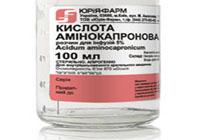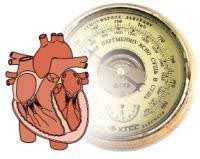Long subfebrile temperature, like and low, but constant and bad "knocking". What could be the cause? To which doctor to contact?
Content
The concept of long-term subfebrile temperature
Under the subfebrile temperature of the body understand its oscillations from 37 to 38 ?WITH. Long-term subfebrile temperature takes a special place in therapeutic practice. Patients who have a long subfebilite is a dominant complaint, are found at the reception quite often. To clarify the cause of subfebilite, such patients are subjected to various studies, they are given a variety of diagnoses and are assigned (often unnecessary) treatment.
In most cases, the prophrytic temperature is found in young women with asthenization phenomena. This is due to the physiological characteristics of the female organism, the ease of infection of the urogenital system, as well as the high frequency of psycho-vegetative disorders.
It should be borne in mind that a long subfebrile temperature is much less likely to be a manifestation of any organic disease, in contrast to a long fever with a temperature above 38 ?WITH. In most cases, the protracted subfebrile temperature reflects banal vegetative dysfunction. Conditionally the causes of long subfebilite can be divided into two large groups - infectious and noncommunicable.
Infectious causes of long subfebrile temperature
Subfebrile temperature always causes an infectious disease suspicion.
Tuberculosis
With an unclear subfebristet, first of all it is necessary to exclude tuberculosis. In most cases, this is not just. From the history of the existence of direct and long-lasting contact with the patient of any form of tuberculosis. The most significant is to find in one place with a sick open form of tuberculosis - an office, apartment, staircase or an entrance of the house, where the patient has a patient with bacteria, as well as a group of nearby houses combined by a common yard.
The presence of a history of previously transferred tuberculosis (regardless of localization) or the presence of residual changes in lungs (presumably tuberculosis etiology), previously detected during preventive fluorography.
Any diseases with ineffective treatment in the last three months.
To complaints (symptoms), suspicious on tuberculosis include:
- The presence of general intoxication syndrome is a long subfebilitation, general unmotivated weakness, fatigue, sweating, decreased appetite, weight loss
- In case of suspected tuberculosis lungs - chronic cough (durability of more than 3 weeks), hemoptal, shortness of breath, chest pain
- In case of suspected extregno tuberculosis - complaints about the violation of the affected body, without signs of recovery against the background of nonspecific therapy
Focal infection
 Many authors believe that a long subfebrile temperature may be due to the existence of chronic foci of infection. However, in most cases, chronic foci of infection (tooth granular, sinusitis, tonsillitis, cholecystitis, prostatitis, adnexit, etc.), as a rule, are not accompanied by an increase in temperature and do not cause changes in peripheral blood. Conduct the causal role of the focus of chronic infection only when the sanitation of the hearth (for example, tonsilectomy) leads to a rapid disappearance of a previously emerged subfebilite.
Many authors believe that a long subfebrile temperature may be due to the existence of chronic foci of infection. However, in most cases, chronic foci of infection (tooth granular, sinusitis, tonsillitis, cholecystitis, prostatitis, adnexit, etc.), as a rule, are not accompanied by an increase in temperature and do not cause changes in peripheral blood. Conduct the causal role of the focus of chronic infection only when the sanitation of the hearth (for example, tonsilectomy) leads to a rapid disappearance of a previously emerged subfebilite.
A constant sign of chronic toxoplasmosis in 90% of patients is a subfebrile temperature. In chronic brucellosis, the prevailing type of fever is also subfebilitation.
Acute rheumatic fever (systemic inflammatory disease of the connective tissue with involvement in the pathological process of heart and joints caused by beta-hemolytic streptococcus Group A and arising from genetically predisposed people) often proceeds only with subfebrile body temperature (especially at the II degree of activity of the rheumatic process).
Subfebilitation may appear after the suffered infectious disease («Temperature tail»), as a reflection of post-harvest asthenia syndrome. In this case, the subfebrile temperature is benign, not accompanied by changes in analyzes and passes independently for 2 months (sometimes «Temperature tail» can last up to 6 months). But in the case of typhoid typhoid, a long subfebilite arising after a decrease in the high temperature of the body is a sign of incomplete recovery and is accompanied by persistent adamisses, inexperienced hepato splenomegalia and counter aezinophilia.
Non-infectious causes of subfebrile temperature
Long-term subfebrile temperature of noncommunicable nature may be due to somatic pathology, but it can be much more likely to explain to physiological causes or the presence of psycho-vegetative disorders.
Of the somatic pathology it is worth paying attention to iron deficiency anemia, which can proceed with subfebrile temperature, and thyrotoxicosis.
Thyrotoxicosis
Subfebrile temperature is almost the rule in case of excess in the blood of thyroid hormones. In addition to the subfebrile temperature with thyrotoxicosis, nervousness and emotional lability, sweating and palpitations, increased fatigue and weakness, loss of body weight amid normal or even increased appetite are most often noted. To diagnose thyrotoxicosis, it is sufficient to determine the level of thyrotropic hormone in the blood. Reducing the level of thyrotropic hormone is the first manifestation of excess thyroid hormones in the body.
Physiological reasons
In many people, subfebrile temperatures are constitutional and is an option for an individual norm. Subfebristitet can develop against the background of emotional and physical (sports) loads, appear after meals, while in a hot room, after insolation. In women, a subfebrile temperature is possible in the second half of the menstrual cycle, which with the beginning of menstruation is normalized; Rarely subfebelitis is observed during the first 3-4 months of pregnancy. In addition, the subfebrile temperature may be unequal in the left and right axillary depressions (more often on the left of 0.1-0.3 ?With above). It is possible to reflectically increase the temperature to the measurement procedure itself - in such patients, subfebrile temperatures are noted only when it is measured in armpits, and in the rectum or oral cavity, the indicators are normal.
Psycho-vegetative causes
Long-term subfebrile temperature in a third of patients wears psycho-vegetative character and is considered as a manifestation of vegetative dystonia syndrome (veganosis, thermoneurosis). Periods of subfebrile temperature in such patients can be held over several years. Favorable background for the appearance of psychogenic subfebilite, in addition to psycho-emotional loads, are allergyizing, endocrine disrisegulation, cranial and brain injury in history.
Long-term subfebrile temperature is more common in young women with the phenomena of asthenization, children in the pubertal period and first-year students.









